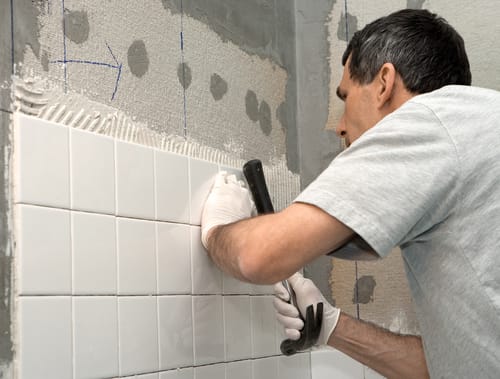
Renovation Loans: What Homebuyers Need to Know
Did you know if you want to make renovations or repairs to your home, you can take out renovation loans to help? Learn more about this loan type.
One of the most exciting parts of buying a home is the endless possibilities of making it your own. Did you know if you want to make renovations or repairs to your home, you can take out renovation loans to help? It’s true. Read on to find out what they are, how they work, and other key details about this loan type.
What Exactly Are Renovation Loans?
Renovation loans, also referred to as home improvement loans, are a type of loan specifically for the purpose of making major updates to your home. Think bigger than just a set of paint brushes or laying down new carpet; a renovation loan covers bigger projects, like adding rooms to a home, building a mother-in-law apartment, or renovating a bathroom completely — to name just a few.
But the main objective of a renovation loan isn’t just to snazz up your house or spruce the property up a bit. It’s much larger than that.
How Do Renovation Loans Work?
A renovation loan is typically pursued with the goal of increasing your property value; after all, renovations are a key part of increasing the value of your home. But it’s not enough to simply tell your bank or mortgage lender you want to make home updates.

Renovation loans are usually based on the estimate of what the project will cost, as well as the post-renovation property value. Much like traditional mortgage loans, as well as personal loans, renovation loans are repaid over a time period and accrue interest that must also be repaid. While there are specific renovation loans, it’s important you distinguish whether or not these are a form of personal loans, or a true home equity loan.
What Should I Keep in Mind if I’m Interested in a Renovation Loan?
Ideally, renovation loans are home equity loans. This is because the loan will be secured by the equity of your home, so lenders will feel less like they’re taking a risk lending to you than a typical personal loan. As a result, renovation loans can have lower interest rates.
This means you’ll need to be sure you have a good amount of equity in your home. If you’re not quite there yet, but you still need to get the renovations done, you’ll need to look into personal loans. It’s also important to note some contractors may hesitate to work with you if the loan is not yet secured.
What Types of Renovation Loans Are Out There?
Believe it or not, there are a wide variety of renovation loans available to you. Outside of securing a personal loan, here’s the most common types of renovation loans you tend to know. Be sure to work with your lender to understand loan terms, interest rates, and qualifications.
FHA 203k Rehab Loan
The FHA backs this loan type and is specifically built to allow borrowers to finance a single mortgage home’s renovation. There are two types: the standard 203k loan, and the limited 203k loan. For a standard 203k loan, you’re only able to make large overhauls, such as structural or foundational work. In contrast, the limited 203k loan only provides financing for repairs not related to the structure of the home.
If you’re in a situation where you’ve suffered damage to your home as a result of a natural disaster, or you’ve decided to buy in a declared disaster area, the FHA also has a 203h loan — which can be combined with the 203k loan. Keep in mind the 203h loan has a very specific set of qualifications, as well as loan limits.
Overall, this loan type is a better fit for fixer-upper types of homes.
Home Equity Loan

The home equity loan is just what it sounds like: a loan that lets homeowners borrow against the home equity they’ve built up, using your home as collateral, and is delivered in a lump sum. With this loan type, you can borrow up to 80% of the market value of your home, minus the amount you still owe on your mortgage. If you’ve amassed a good amount of equity in your home, this can be a great option for undertaking significant renovations and repairs to your property.
Home Equity Line of Credit, or HELOC
The HELOC loan type is similar to the home equity loan, with its major difference being that it allows you to take out funding as you need rather than delivering one lump sum at once. Because you’re able to take out funds as needed against the limit — the value of your home equity — it functions similarly to a credit card.
If you have less costly or more minimal home improvement needs, this can be a good option to pursue.
Higher-balance
The cash-out refinance stands out as a loan option for renovations. To start, you proceed with refinancing your home, replacing your existing mortgage with a new, higher-balance mortgage. You can then take the difference between your existing mortgage and new mortgage out in cash. If you’re planning to refinance already, have built up good equity in your home, and might be able to secure a lower interest rate, this might be worth looking into.
If you're looking at homes that may require substantial rehab work then a top real estate agent can help you understand the ins and outs of the process, and the best place to connect with a them is RealEstateAgents.com. Get started today to receive a custom list of real estate agents. Don’t wait — they’re ready to help you find your perfect home!






